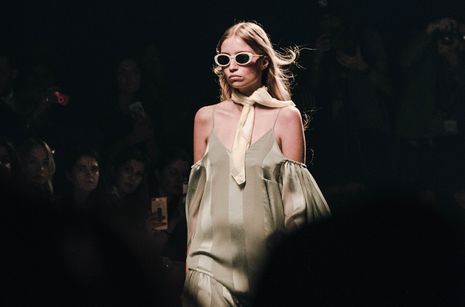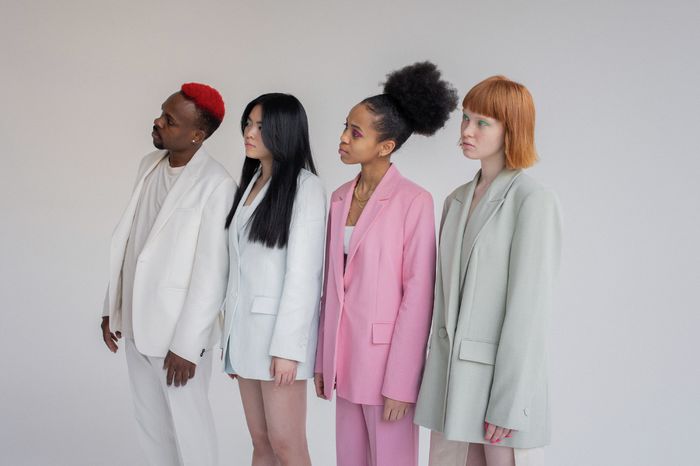The deification of high fashion: the biggest threat to sustainability?
Nafisa Mahmood unpicks the impact of high fashion on sustainability

Once its favourite buzzword, the term ‘diversity’ is quickly becoming a ghost of fashion’s past. In its place haunts a new expression plaguing the lips of the industry and its commentators: sustainability. The green-washed stage has been set and fast fashion is cast as its ultimate villain. However, upon a closer inspection, our Big Bad might just be the unexpectedly wicked grand dame that we have been adulating the entire time.
“Over-consumption is undoubtedly rooted in over-production”
Naturally, the mind draws back to Miranda Priestly’s infamous cerulean blue monologue. While Streep’s character intends to reinforce the stronghold of high fashion in a positive manner, it may be more beneficial to deem this dictatorship as the crux of why the industry is so unsustainable in the first place. Cerulean blue has metamorphosed into Pierpaolo Piccioli’s gaudy Valentino Pink, as of his 2022 Ready to Wear collection. It has since graced the red carpet on the likes of Zendaya and Simone Ashley, as well as making an appearance on the Met steps this year. Hence, I wouldn’t be surprised to see the colour dyed onto garments in the flagships of fast fashion soon, just in time to match the pink sunset skies of summer.
VALENTINO PINK SPOTTED AT THE MET GALA 2022
Why do we continue to absolve high fashion of criticism in the sustainability conversation? We are quick to condemn fast fashion for promoting over-consumption; a take that, at best, rightfully critiques those who choose to parade £5000 Shein hauls over social media and, at worst, reads as undoubtedly classist towards those who shop in fast fashion out of necessity. Of course, there is validity in the over-consumption argument. Derived from the capitalist model that encourages consumers to feel an affinity towards new, trendy clothes. Fast fashion fulfils the psychological urge to be attractive and accepted.
However, it is not solely consumers to be blamed. This over-consumption is undoubtedly rooted in over-production, of which high fashion bears damning credibility. It is high fashion that churns out expansive collections for fashion show runways biannually, paving the way for fast fashion to do the same at an alarmingly quicker rate. It is high fashion that uses these runways to dictate the latest colours and silhouettes that will dominate both the online and physical high streets. No fashion trend is an island, and high fashion has decidedly made that so.
“We even thrift with the subconscious objective of stumbling across vintage Prada”
Ultimately, high fashion has been relieved of this criticism because of how dearly most deify it. We even thrift with the subconscious objective of stumbling across vintage Prada. The term high fashion itself draws wispy veils of glamour and exclusivity, and we play into this. Perhaps most obviously when we roll our eyes in the face of influencers being invited to high-profile events like the Met Gala, yet gaze adoringly when exceedingly affluent celebrities attend the very same events. This restricted access to high fashion places it on a pedestal that only socialites can reach, perpetuating the glorification of the industry.
Are the inner workings of fashion ultimately unsustainable? The phrase sustainable fashion itself feels utterly oxymoronic. Sustainable expressing a need to be maintained. Fashion referring to the revolving door of styles decreed by luxury fashion houses. Thus, it is increasingly apparent that the only sustainable way to participate in fashion consumption is by dramatically reducing consumption itself. To look after the clothes we already own and curate a personal style beyond trends and the more insidious micro-trends, though this is seemingly impossible considering the choke hold high fashion holds over us. Therefore, our first step in creating a more sustainable fashion industry must be to pull apart the long-drawn curtains that we have invariably helped to fasten.
 Features / Should I stay or should I go? Cambridge students and alumni reflect on how their memories stay with them15 December 2025
Features / Should I stay or should I go? Cambridge students and alumni reflect on how their memories stay with them15 December 2025 News / Cambridge study finds students learn better with notes than AI13 December 2025
News / Cambridge study finds students learn better with notes than AI13 December 2025 News / Dons warn PM about Vet School closure16 December 2025
News / Dons warn PM about Vet School closure16 December 2025 News / News In Brief: Michaelmas marriages, monogamous mammals, and messaging manipulation15 December 2025
News / News In Brief: Michaelmas marriages, monogamous mammals, and messaging manipulation15 December 2025 Comment / The magic of an eight-week term15 December 2025
Comment / The magic of an eight-week term15 December 2025









